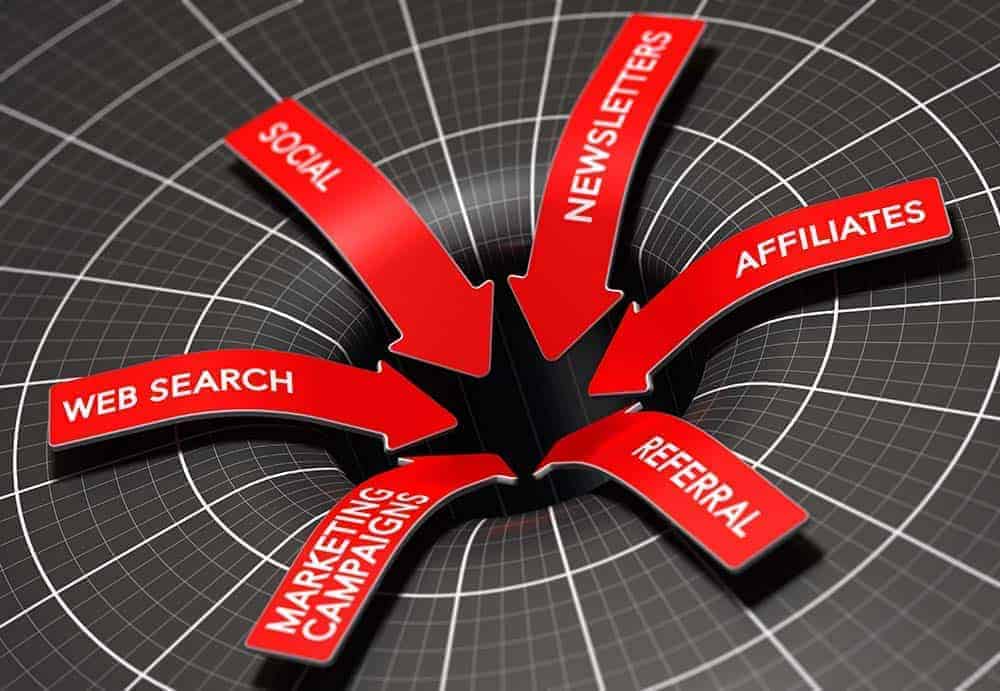A sales channel is the medium you use to sell your products or services. For example, a physical retailer of coffee beans would use a brick- and- mortar coffee shop to sell his products which would include raw materials and beverages. The coffee shop is his sales channel. On the other hand, the wholesaler of coffee beans would have the company’s distributors as the sales channels for its products.
Direct Sales Channels Vs. Indirect Sales Channels: What Is The Difference?
In our first example, the coffee shop owner is selling his products directly to his customers. In the second example, the wholesaler has enlisted the help of middlemen; the distributors and perhaps other resellers, to sell the company’s coffee beans.
The coffee shop owner is utilizing a direct sales channel to sell his products. There are no middlemen involved and he gets to keep all of the profits. Of course, the coffee shop owner employs cashiers who also function as front- line salespeople.
Not only will cashiers process the transaction, they will also upsell other products such as muffins, sandwiches, or perhaps entice you to upsize your coffee from a “short” to a “large”.
Employing the cashiers will entail additional costs in the form of salaries and benefits. Some retailers will give cashiers sales quotas. This will give the company an idea of the ROI per cashier.
Other companies may employ different direct sales channels for their products and services. For example, a telecommunications company may set up a telemarketing team to call leads generated by the marketing team.
Another option for the telecommunications company would be to outsource telemarketing services to a third party. With this option, the company would not cover the overhead costs of the telemarketing agents but would have to pay the management fees of the third party service provider.
Other types of direct sales channels include resellers and personal sellers who purchase the products and sell them to targeted buyers.
In contrast, the wholesaler is using indirect sales channels to sell the company’s products.
The company does not keep all of the profits as it has to pay commissions and incentives to the middlemen. However, the company’s overhead costs are low because it does not pay additional overhead costs to hire personnel to sell the products directly. By using indirect sales channels, the company does not have to pay salaries, benefits, and incur other incremental costs.
What if you are running an e-commerce business? What kind of sales channel will you be using?
The answer may seem obvious. As an online business, you are using the Internet to sell your products and services. You may have an e-commerce website where interested customers can browse through your selection and complete a transaction at the Checkout Counter.
However, the website is not your only option. You might decide to sell your products in a “marketplace” such as Amazon or eBay. By selling through Amazon, you will be capitalizing on the website’s gigantic community of users. As a tradeoff, Amazon will take its share of your sales and you will have to abide by the website’s rules and regulations.
Another option would be to sell your products through affiliate marketers. They function like the distributors and resellers of the coffee bean company. Instead of paying overhead costs for hiring sales agents, you pay affiliate marketers a percentage of your profits.
Thus, with an e-commerce business, you could sell directly to your customers from your website or sell indirectly through community marketplaces or affiliate marketers.
The question is: How would people know about your e-commerce website; it’s products and services?
It is important to know what sales channels you will be using to sell your products and services so that you can identify the marketing channels needed to promote them to your intended audience.
Aligning Your Sales Channels With Your Marketing Channels
Sales and Marketing are related functions but independent of one another. The marketing team’s objective is to generate interest for the company’s products and services by utilizing a variety of techniques, processes, and tactics that market and promote their value to the prospective customer.
The sales team’s objective is to close the deal. It is focused on converting interest into revenues. Salespeople work to turn prospects into paying customers. This is the general idea behind the sales funnel. Marketing brings prospects to the funnel. The sales team guides them through the funnel until the prospects come out of it as paying customers.
The greater the number of prospects marketing brings in, the larger becomes the entry point of the funnel. Thus, marketing may have to utilize different marketing channels to generate a higher volume of prospects or leads.
Marketers make decisions based on ROI or Return on Investment. Therefore, if you use a new marketing channel that shifts interest away from an existing marketing channel without improving your conversion rate, the investment in the new marketing channel is not worth it. You will be incurring greater costs without improving sales conversions.
There are a good number of marketing channels to choose from; each one has its own strengths and weaknesses. Your choice of marketing channels should align with the sales channels in order to support your business goals and objectives.
Direct Marketing Channels Vs. Indirect Marketing Channels: Which Ones Should You Choose To Support Your Sales Channels?
Just like sales channels, there are direct and indirect marketing channels. What is the difference between the two types of marketing channels?
With direct marketing channels, you are targeting a specific or segmented group in your audience. A good example of a direct marketing channel is email marketing whereby you have built up a mailing list consisting of newsletter subscribers, existing customers, and social media followers.
One of the biggest advantages of email marketing is that you can segment your mailing list into categories. This way, you can create content that is tailor-fit to meet the needs, interests, and concerns of your subscribers.
For example, if you are an online retailer of supplements, you can segment your content according to interest.
You can categorize your subscribers according to those who want to lose weight, gain muscle, fight aging, and improve sports performance. Then, create content that offers products catered to meet the goals of each specific interest.
You can read more about the benefits of email marketing in our articles, “7 Best Practices For Email Marketing” and “Why Email Marketing Is Very Much Alive”.
Another good example of a direct marketing channel is Pay- Per- Click or PPC ads. The people who click on your PPC ad are those who have interest or need of your product or service. They will land on your website home page and hopefully, stay long enough to find what they are looking for.
Other examples of direct marketing channels are:
- Display banner Ads
- Direct Mail
- Radio Ads
- TV Ads
- Newspaper Ads
Direct marketing channels are ideal if you are selling your products in a brick- and- mortar store or if you have a website.
Indirect marketing channels are primarily used to promote or create greater awareness about your business; its products and services. If you are engaged in e-commerce, you can use indirect marketing channels such as social media marketing and blogging to drive inbound traffic to your website.
For example, you can blog about your business; how it began, why you chose this specific industry, and your expertise. You can also publish content that showcases the value of your products and services. These types of informative, value-added content include “How To” and List-Type articles.
Once you’ve uploaded your blogs on your website, you can distribute them to your various social media networks. The purpose is to entice readers to visit your website so they can learn more about your business.
Staying active on social media and other online platforms are great ways to remain visible on the Internet. The more people read about you, the greater the probability of generating interest in your business.
Brick- and- mortar businesses likewise benefit from indirect marketing channels such as social media and content marketing. Fashion retailers use image- heavy social media networks like Instagram, Pinterest, and YouTube to showcase their products.
Video marketing has become a powerful tool for driving traffic and increasing sales conversions. Companies have links to their YouTube channel embedded in their websites. Interested parties can go through “Explainer Videos” then visit the YouTube channel to explore more video-based content.
If you are utilizing indirect sales channels such as an online community marketplace like Amazon, you can write product reviews and include a link to the page offering your products and services. You may also want to contribute to industry-related websites and direct readers to your website or product page.
Conclusion
Are there limits or constraints to the type of sales channel you want to use for your business? You will have to answer these three questions:
- What is your budget? Do you have enough resources to support and sustain sales and marketing teams?
- Are you open to the idea of outsourcing sales and marketing activities to third- party service providers?
- How reliable are your suppliers? Can you effectively manage the level of inventory needed to comply with demand?
Large companies like Apple and Amazon have incorporated different types of sales channels into their business development strategy with great success. Both companies have brick- and- mortar locations as well as e-commerce websites that directly sell their respective products to customers.
They have integrated outsourced telemarketing services with in-house sales agents to spread out the costs and cover more ground. Of course, these companies have maintained an active online presence through social media and other Internet- based platforms.
The bottom-line is you should use sales channels to help grow your business. The types of sales channels you choose will depend on your goals, objectives, and budget.
By knowing the proper sales channels, you will have a better idea on which processes to use to effectively market and promote your business. When these channels are aligned, your marketing efforts will be able to generate more leads for the sales funnel. Then, it will be easier for your salespeople to do their job and convert prospects into paying customers.
If this article has got you seriously thinking about using certain sales channels for your business, give us a call or drop us an email. You can consult with us free of charge!







